
The key to a low maintenance and low cost garden is to grow a variety of plants that readily self-seed.
While most of the typical garden cultivars would require you to harvest, store, and then sow collected seeds the following year, self-sowing plants produce seeds that are so hardy, they drop to the ground in autumn and pop up on their own in spring.
These are known as “volunteers” in the world of horticulture, since they require no effort or intervention on the part of the gardener.
Allow them to flourish where they happen to land or relocate them to a suitable spot. You can also collect seed pods in the fall and toss them into areas of the garden where you would like them to sprout.
Many kinds of ornamental and edible plants reseed themselves. Here are some of the easiest self-sowers to grow:
Self-Seeding Flowers and Ornamentals
1. Morning Glory (Ipomoea spp.)
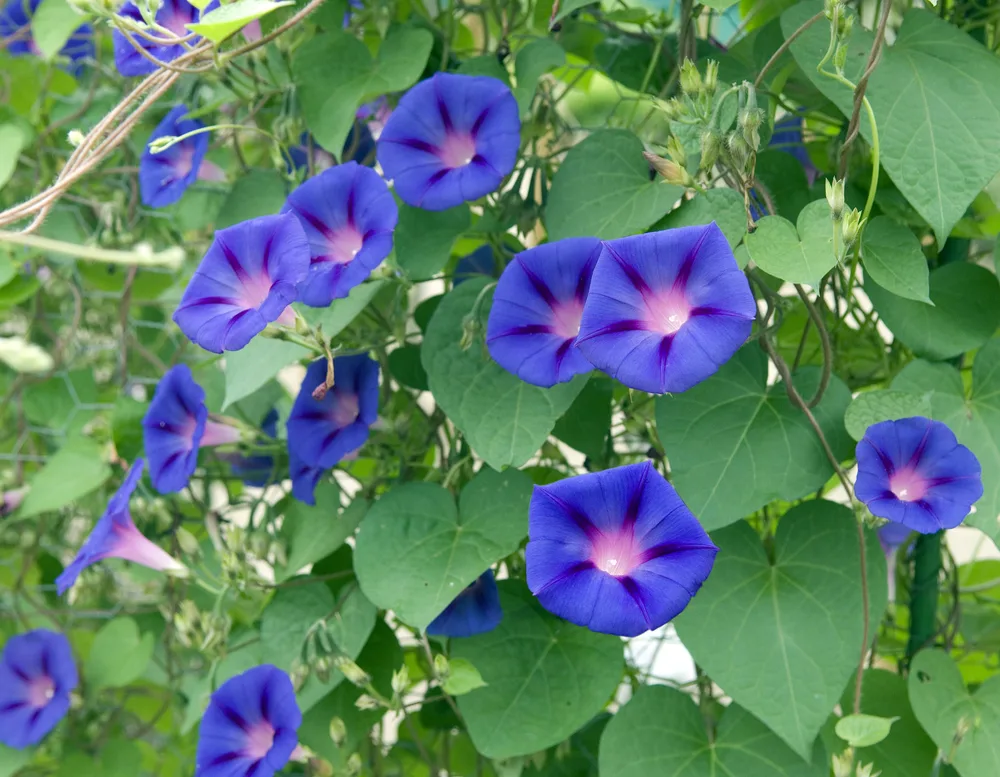
With heart shaped leaves on twining vines, morning glory blooms with trumpet shaped flowers in purple, pink, blue, red, or white, opening up in the morning sun.
Growing up to 15 feet in length in a single season, morning glories will cling to any and all nearby supports – including other plants.
Although morning glory is an annual that will die back completely each winter, it self-sows so prolifically that each generation is more numerous than the last.
Take care not to let morning glory take over by pulling up or relocating seedlings that have wandered too far.
Hardiness zone: 3 to 10
Sunlight exposure: Full sun to part shade
2. Calendula (Calendula officinalis)
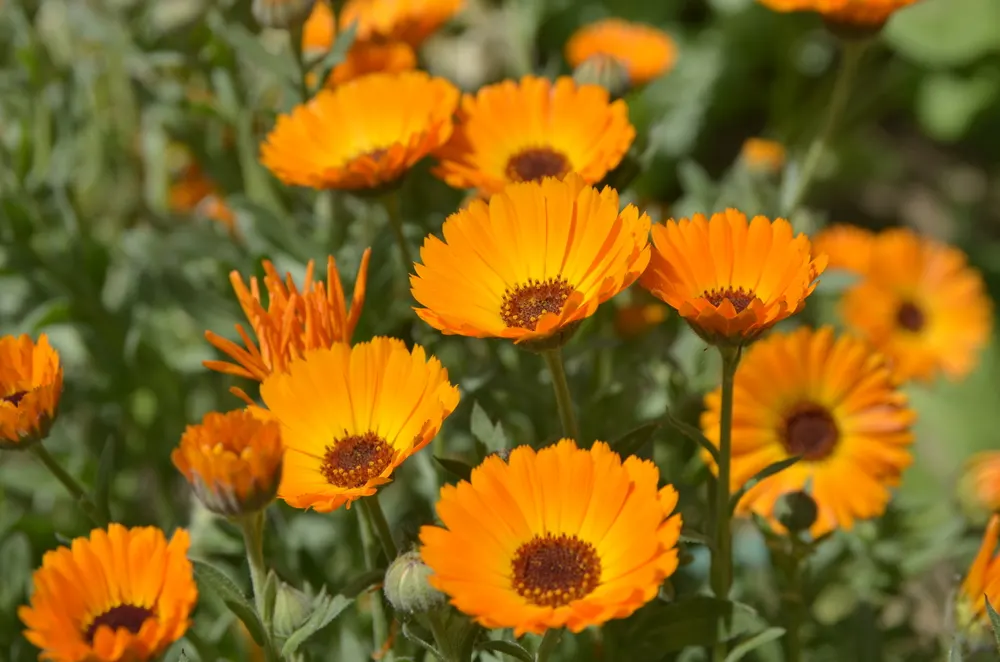
Truly a gardener’s best friend, calendula is as beneficial as it is lovely.
Bearing golden daisy-like flowers, calendula (or pot marigold) is an excellent companion plant for tomatoes, carrots, cucumber, asparagus, peas, lettuce, and more.
Calendula also attracts numerous beneficial insects to the garden, including bees, butterflies, and other pollinators, as well as predatory insects like ladybugs and lacewings that will feast on aphids and other “bad guy” insects.
Its fragrant leaves are a natural repellent for mosquitos and asparagus beetles too.
Calendula seeds or starts only need be planted once, since this annual flower will reliably repopulate itself each season.
Hardiness zone: 2 to 11
Sunlight exposure: Full sun to part shade
3. Field Poppy (Papaver rhoeas)
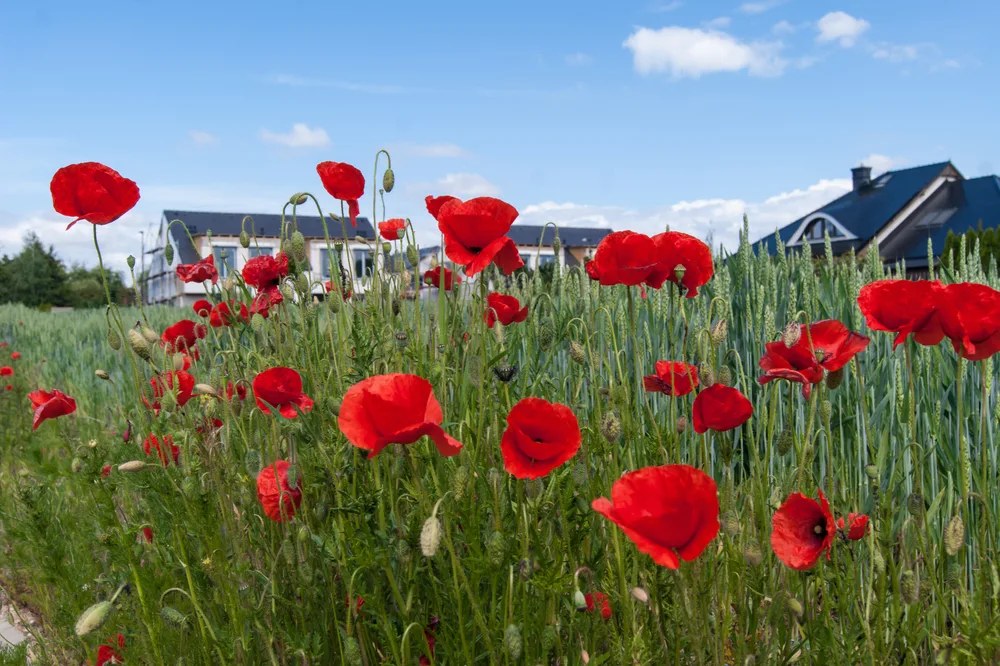
As memorialized in the World War I poem, In Flanders Fields, the common field poppy is so incredibly hardy that it will grow and thrive in even the most war ravaged landscapes.
A stunning specimen with papery petals and a distinctive black center, its blooms are usually scarlet red but sometimes appear in purple or white. It reaches 9 to 18 inches in height on a hairy stem with toothy leaves.
Field poppies flower from late spring to early summer. When bloom time is over, its petals drop to reveal a capsule filled with small black seeds.
Once this capsule is ripe, it explodes to distribute its seeds that will quickly germinate the following season when the earth is disturbed.
Hardiness zone: 3 to 10
Sunlight exposure: Full sun
4. Cosmos (Cosmos bipinnatus)
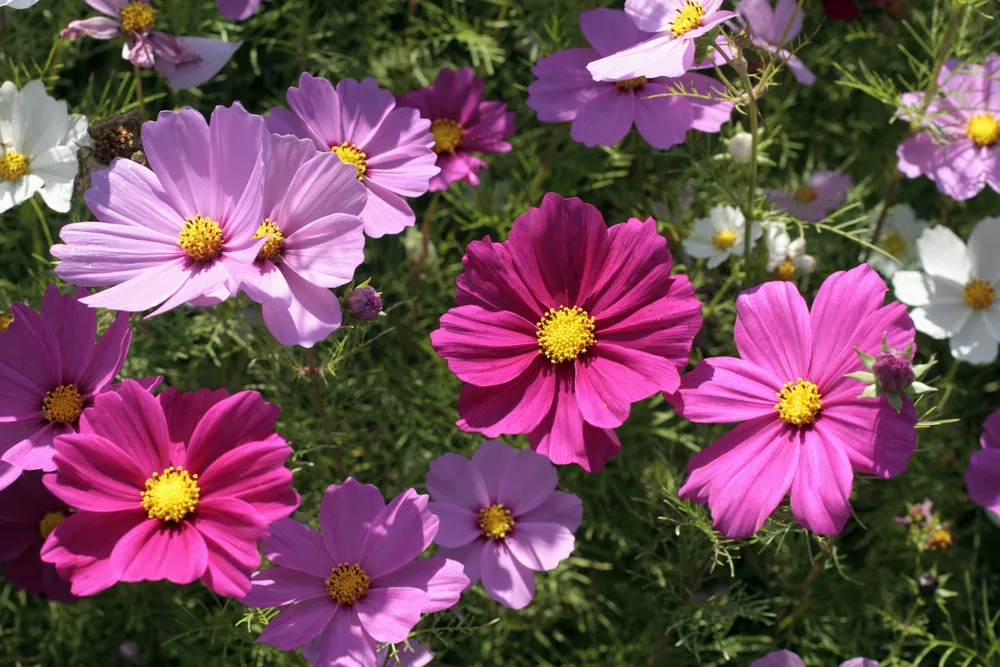
Cosmos provides a glorious display of blooms all season long – from June until the first frost.
Growing up to 4 feet tall, cosmos is a low maintenance annual with 8-petalled florets arranged around a yellow center. Its foliage makes cosmos easy to recognize, a bushy mass of feathery and soft needle-like leaves.
Pink, purple, and white are the most common colors, but with dozens of cultivars, cosmos blooms may be seen streaked and rimmed with various hues.
While deadheading the flowers will prolong blooming, leave spent flowerheads on the plant to ensure it self-sows.
Hardiness zone: 2 to 11
Sunlight exposure: Full sun
5. Sweet Alyssum (Lobularia maritima)
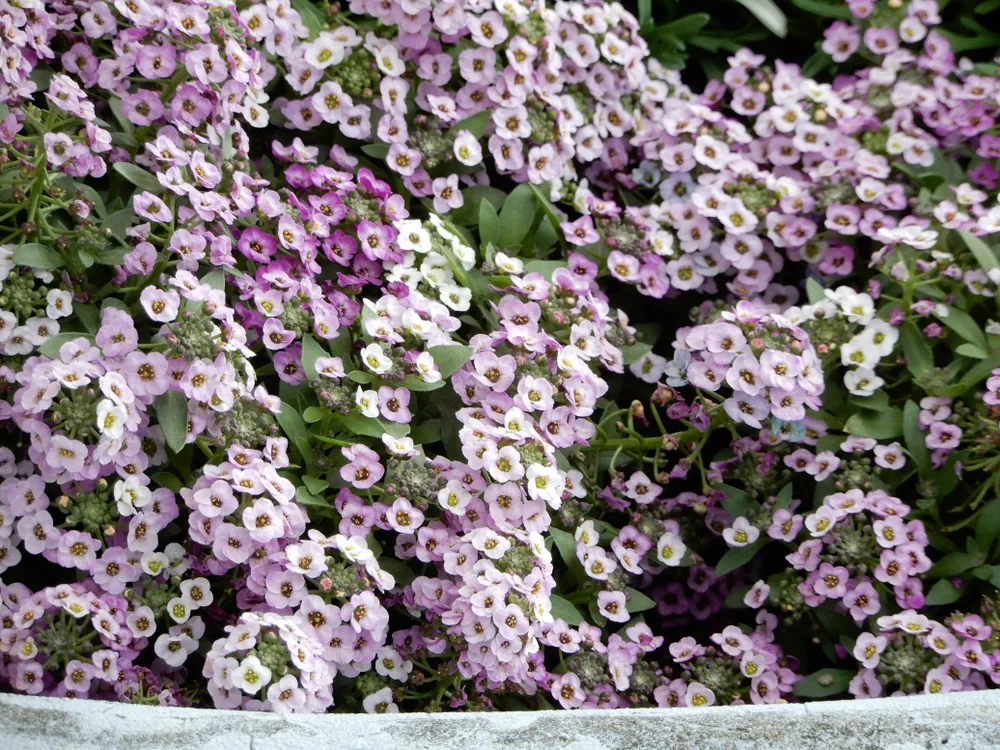
Sweet alyssum is a low growing, mat forming plant that will quickly fill in any empty spots along border fronts, under plantings, and edgings.
A showy and fragrant annual, it bears clusters of honey scented tiny flowers in white, pink, yellow, or purple. When in bloom, its flowers are so abundant they may entirely conceal the lance-shaped grey-green foliage.
Because sweet alyssum flowers so profusely throughout the growing season, and each seed pod contains two seeds, it will easily double its numbers each year.
Hardiness zone: 5 to 9
Sunlight exposure: Full sun to part shade
6. Love-in-a-Mist (Nigella damascena)
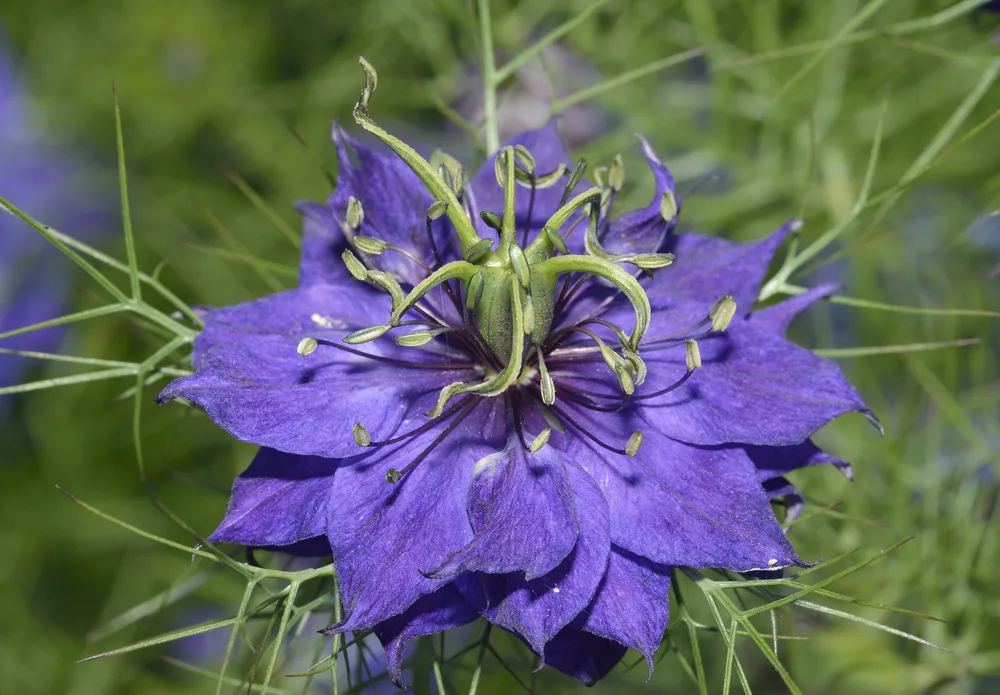
An unusual and eye-catching beauty, love-in-a-mist is so named for the single flowers that arise from bushy mounds of soft, airy, thread-like leaves.
Appearing in a range of blues, but also sometimes lavender, pink, and white, love-in-a-mist’s blooms offer a fascinating show from June to August.
Beginning with between 5 and 25 sepals arranged around the stamens, the 1.5 inch flowers eventually develop a large, egg-shaped seed pod in its center.
Filled with small black seeds, the seed capsule is bizarre and intriguing with twisted horns, a bristled base, and a purplish hue.
Leave the seed pods on the plant and love-in-a-mist will generously reseed itself.
Hardiness zone: 2 to 11
Sunlight exposure: Full sun
7. Giant Larkspur (Consolida ajacis)
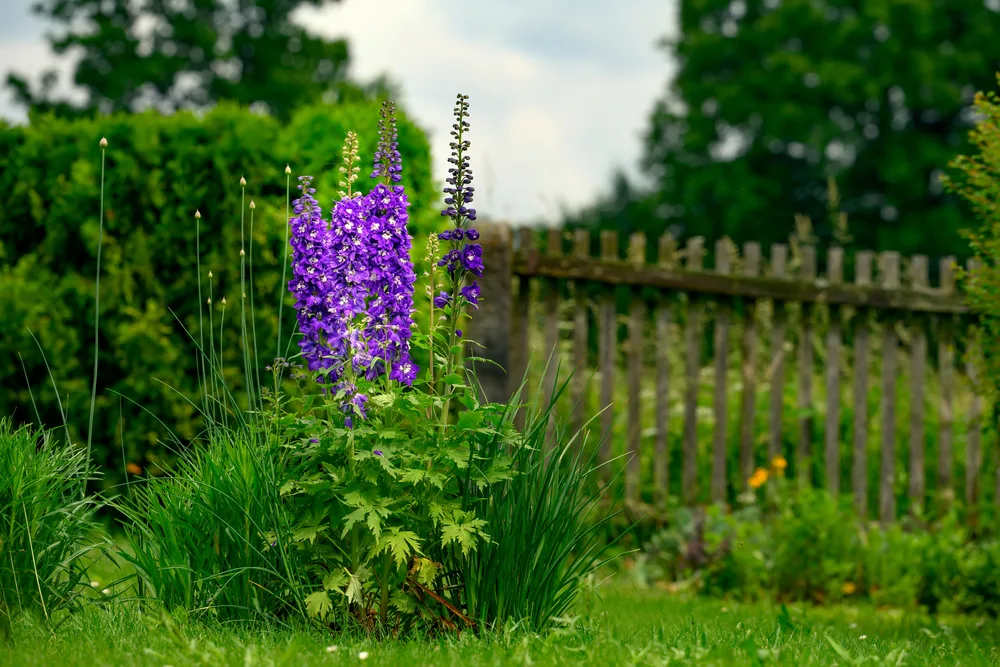
Giant larkspur is a big and beautiful annual with towering floral spikes in blue, pink, or white.
The flowers, each 2 inches across, are reminiscent of iris, with five exterior sepals around the stamens and two erect inner petals that form a protective hood over the reproductive organs.
Reaching up to 4 feet tall, the spikes hold dozens of blooms along the stem.
After the two month blooming period is over, the flowers give way to seed pods that contain numerous small black seeds.
Hardiness zone: 2 to 11
Sunlight exposure: Full sun
8. Honeywort (Cerinthe major ‘Purpurascens’)
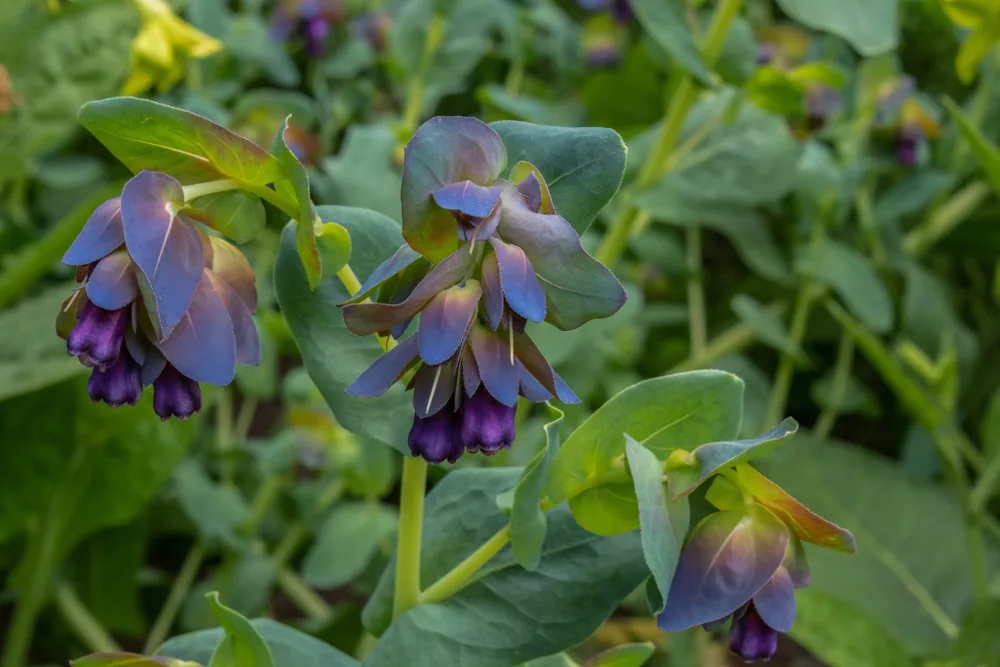
Beloved by bees and hummingbirds for its honey flavored nectar, honeywort provides an interesting show from spring to fall.
It has fleshy oval blue-green leaves that are topped with 2 to 3 tubular dangling flowers in a rich purple hue. Colorful bracts surround each floral cluster, deepening to a bright blue as the nights get cooler later in the season.
In autumn, large black seeds are readily dispersed to ensure a healthy colony the following year.
Hardiness zone: 2 to 11
Sunlight exposure: Full sun
9. Garden Angelica (Angelica archangelica)
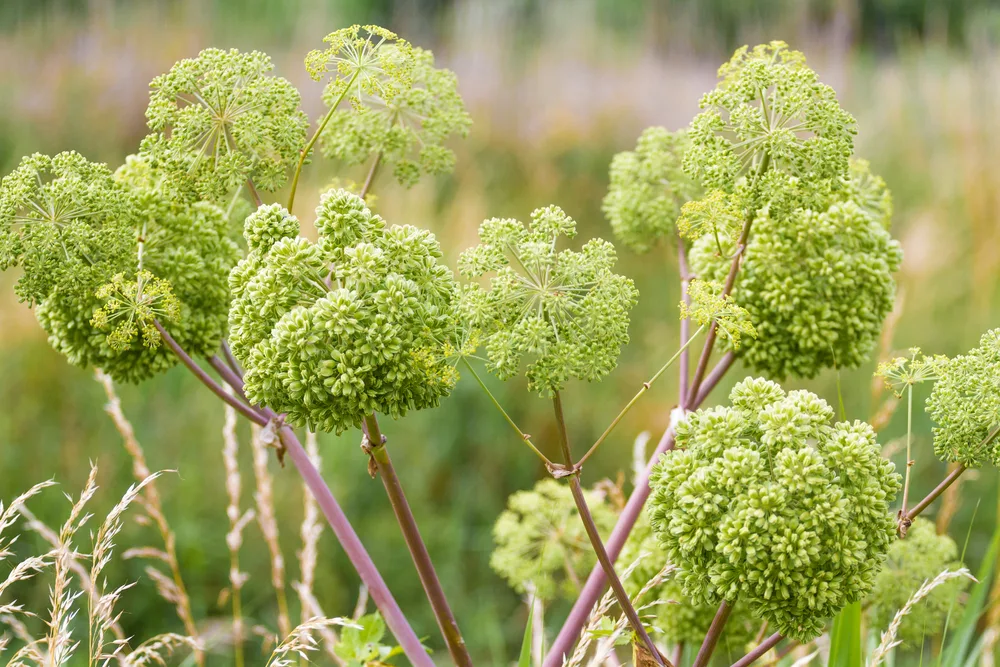
Adding interesting textures and shapes to the flower bed, garden angelica is a large biennial plant that produces compound umbels in its second year.
These are composed of tiny green-white flowers that form an attractive orb shape.
At 6 feet tall, the multibranched stem can hold many orbs, each 6 inches in diameter, so give this plant plenty of room to grow.
After it has produced seeds in its second year, garden angelica will die back but will be replaced by the next generation.
Hardiness zone: 5 to 7
Sunlight exposure: Full sun to part shade
10. Common Blue Violet (Viola sororia)
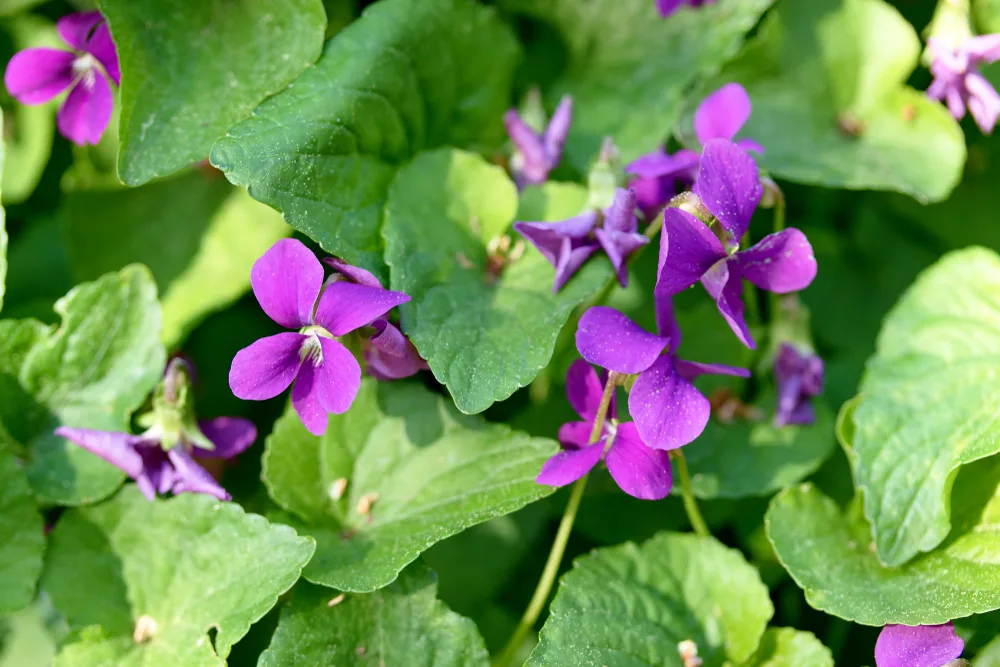
Native to eastern North America, common blue violet is a low growing perennial wildflower.
Forming a basal rosette, common blue violet is a stemless plant with leaves and blooms emerging directly from the underground rhizomes in late spring.
The dainty 5-petal flowers, about an inch across, are medium to dark violet with a white inner throat.
Alongside the pretty flowers, it will also bear cleistogamous flowers (petalless, closed, self-pollinating buds) that produce seed. By summer’s end, the seeds are flung outward via mechanical ejection.
Hardiness zone: 3 to 7
Sunlight exposure: Full sun to part shade
Self-Sowing Edible Plants
11. Parsley (Petroselinum crispum)
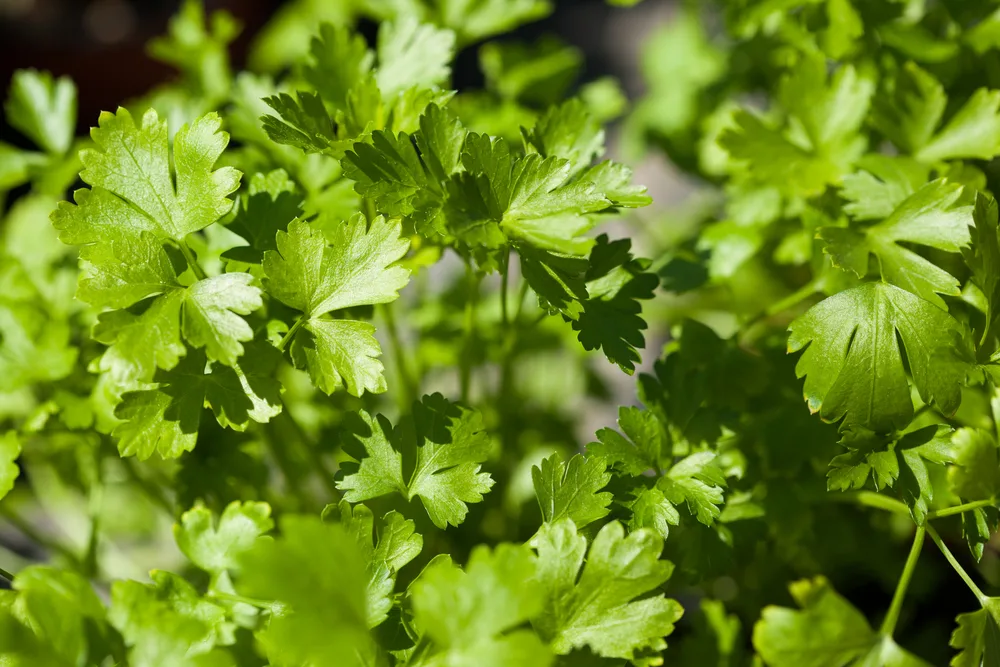
Parsley is usually treated as an annual with fresh plantings every spring. You can, however, ensure your parsley crop is entirely self-sustaining by taking advantage of its biennial nature.
Plant and harvest parsley as normal in its first year. In its second season, allow it to flower and set seeds for the third year.
The original plant will eventually die back, but this herb self-sows so freely that you will have a permanent parsley patch in no time.
Hardiness zone: 5 to 9
Sunlight exposure: Full sun to part shade
12. Dill (Anethum graveolens)
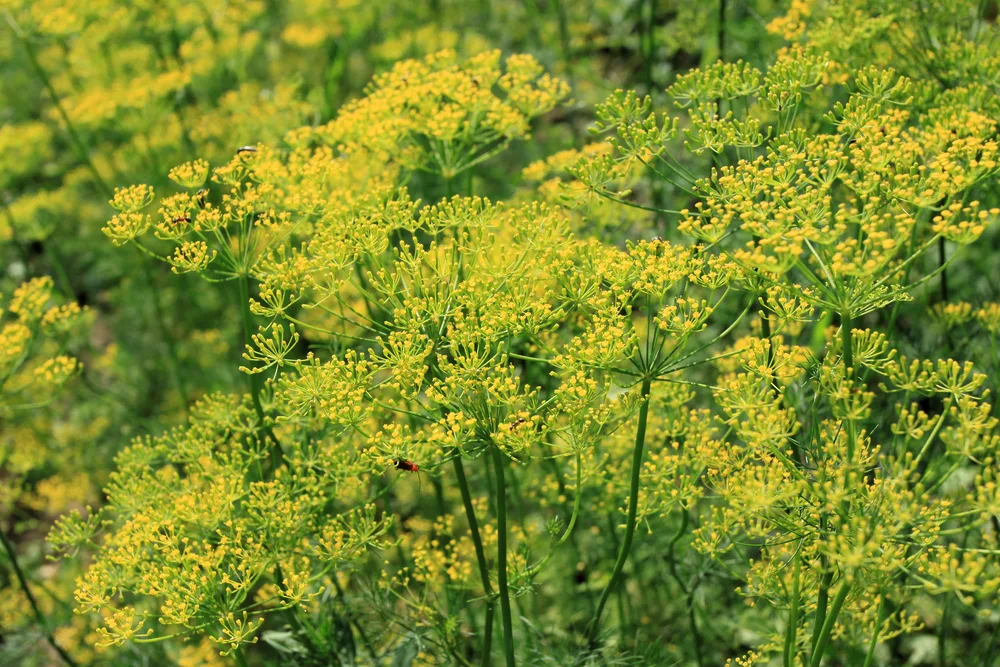
Grown as an edible and ornamental, dill is an aromatic annual herb with delicate and lacy foliage.
When in bloom, it displays large flattened umbels in yellow, about 10 inches across. These are very attractive to bees, butterflies, wasps, hover flies, and other beneficial insects.
Blooms are followed by a profusion of seeds that will drop to the ground and pop up the following year.
Hardiness zone: 2 to 9
Sunlight exposure: Full sun
13. Arugula (Eruca versicaria)
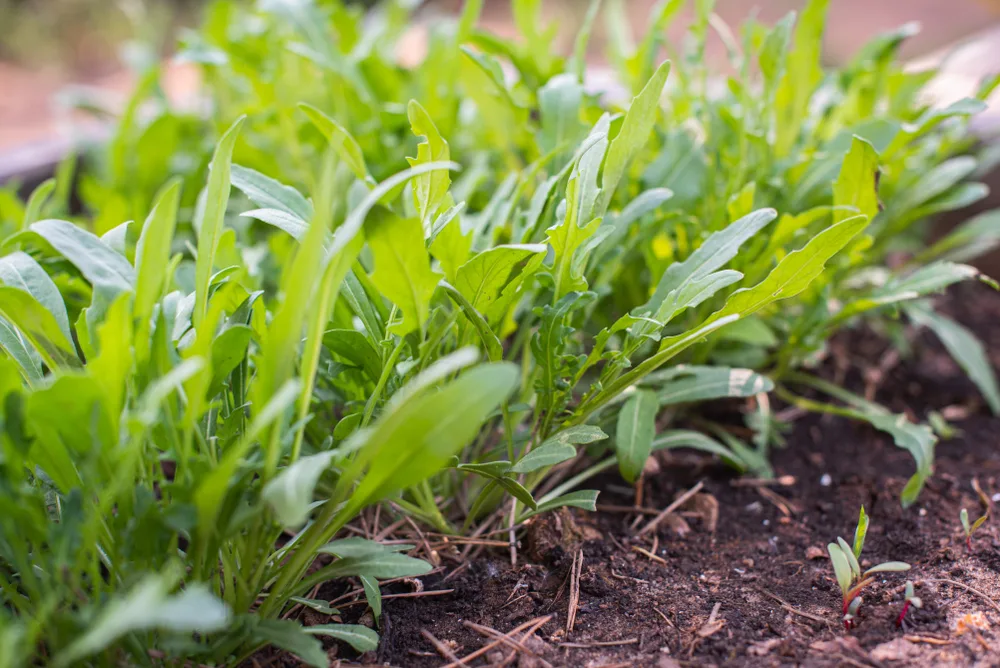
Arugula (or rocket) is an annual salad green with a spicy, pungent flavor.
It’s a cool season crop that is best harvested early in the summer when its leaves and still young and tender.
By the heat of midsummer, arugula tends to bolt. Leave the flowers on the plant and it will reliably self-sow.
Hardiness zone: 5 to 9
Sunlight exposure: Full sun
14. Mountain Spinach (Atriplex hortensis)
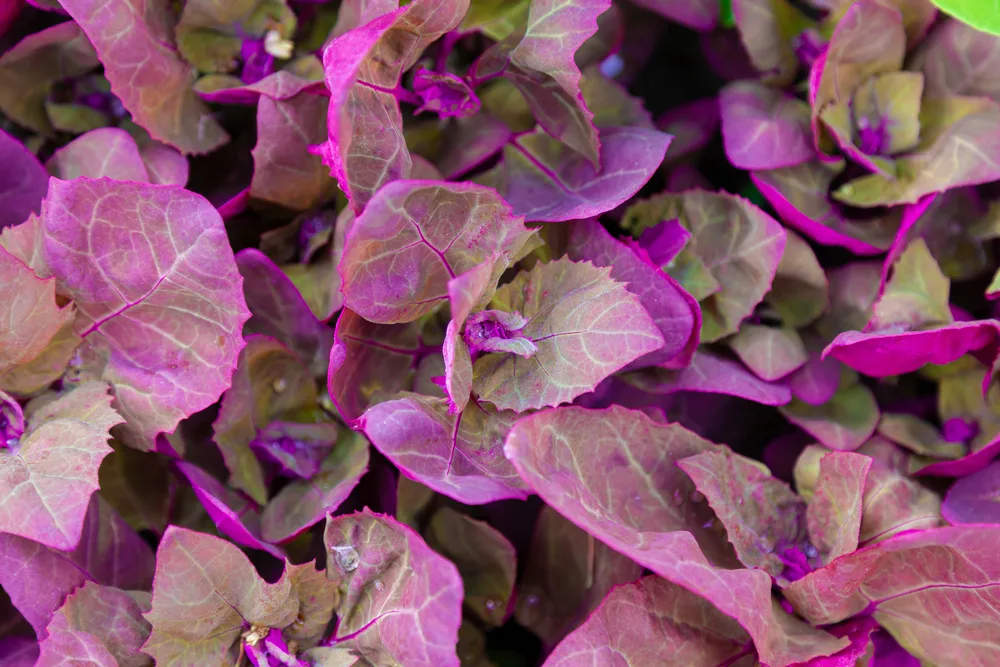
A warm weather alternative to spinach, mountain spinach – or orach – is a large leafy green that tastes very much like spinach.
Since it can handle hotter weather, mountain spinach can be harvested from all season long.
Mountain spinach can reach 6 feet in height and is available in red, green, or white leafed varieties.
When mountain spinach goes to seed, it will bear attractive flowerheads that turn into branches covered with papery seed pods, each containing a single black seed.
Hardiness zone: 4 to 8
Sunlight exposure: Full sun
15. Carrot (Daucus carota subsp. sativus)
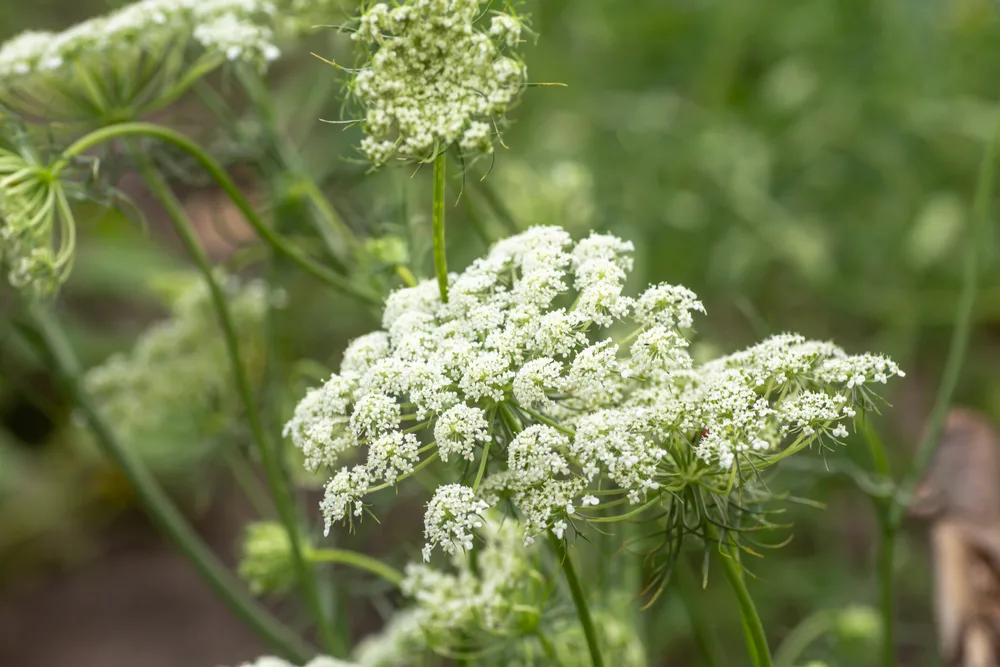
Carrots are biennial plants that flower and set seed in their second year.
When harvesting them after their first season, leave a few carrots in the ground to overwinter. Their lacy foliage will die back but the underground taproot will survive cold and frost.
The next spring, the overwintered carrots will spring back into action, putting out leaves and developing pretty umbel flowers that look like Queen Anne’s lace.
The blooms will eventually develop into seeds that will drop to the soil for the next season’s crop.
Hardiness zone: 3 to 10
Sunlight exposure: Full sun
16. Lettuce (Latuca sativa)
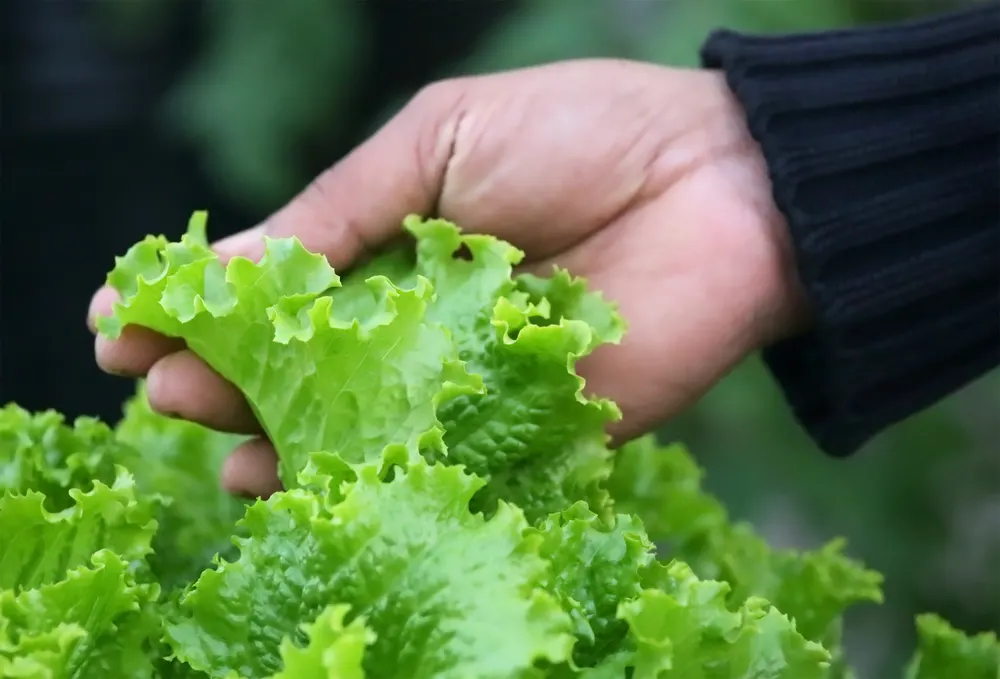
When you harvest lettuce as a cut and come again crop, snipping off just a few leaves at a time per plant, it will continue to develop throughout the season.
Because lettuce is a cool weather crop, it will begin to bolt when temperatures get too warm.
Allowing it to flower and complete its reproductive cycle means it will send out fresh volunteers next year.
Hardiness zone: 4 to 9
Sunlight exposure: Full sun to part shade
17. Cilantro (Coriandrum sativum)
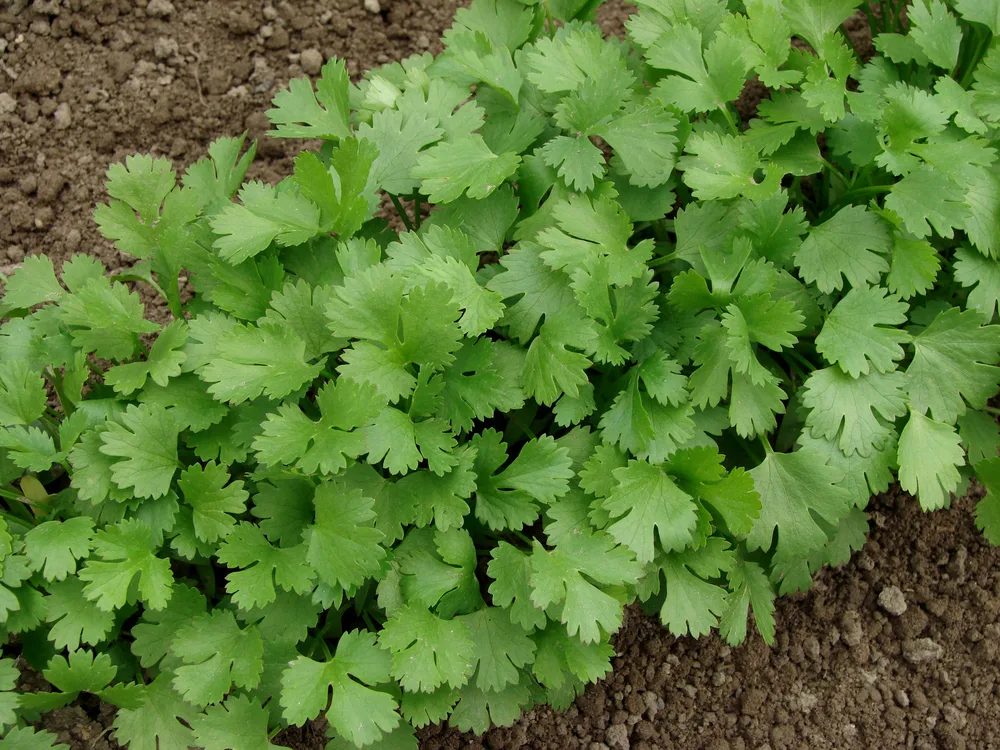
Cilantro is best planted early in the growing season so you can get a good leafy harvest in before it begins to bolt when summer temperatures rise.
Removing the flowers as they appear will prolong the harvest, but letting some go to seed will give you another crop.
When temperatures cool back down in the fall, you’ll often see new seedlings popping up for a second planting in a single season – labor free succession gardening!
Hardiness zone: 2 to 11
Sunlight exposure: Full sun to part shade
18. Kale (Brassica oleracea)
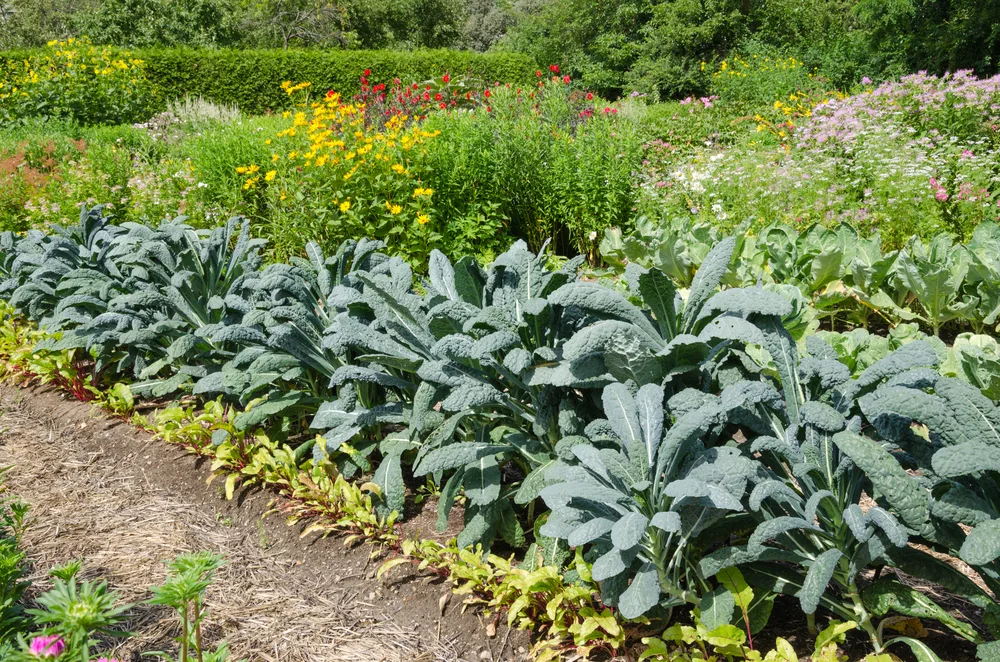
Kale is the highly nutritious, cold-hardy vegetable that will continue to grow and produce leafy greens in temperatures as low as 5°F.
Even if you reside in cooler climes, kale plantings will go dormant for the winter – but its root system will remain intact and spring back to life when temperatures warm up again.
Because it is a biennial, kale will send out flower stalks in its second year. These will be followed by long and slender seed pods that crack open to drop their seeds.
Hardiness zone: 7 to 10
Sunlight exposure: Full sun
Tips for a Self-Sowing Garden
Saving you money, time, and considerable effort, self-seeding plants are certainly a smart way to garden!
By taking a hands-off approach, you’re simply allowing the plant to complete its reproductive cycle – as nature intended.
Although volunteers will pop up on their own, there are things you can do to increase the self-sowing garden’s chances of success:
Plant heirloom varieties
Open-pollinated, heirloom varieties will produce fruit and flowers just like the parent plant. Avoid F1 hybrid seeds since the next generation won’t be true to type.
Don’t deadhead
Deadheading spent flowers encourages more blooms, but leave some on the plant so they can broadcast their seeds.
Distinguish between weeds and volunteers
Get to know each growth stage of your self-seeding plants so you don’t mistake them for weeds in spring! Wait until the seedlings have developed their first true leaves before deciding to yank them up.
Create a self-seeding vegetable patch
Dedicating a space just for your reseeders will make managing them and their volunteers a lot easier. Leave the soil in these beds undisturbed until much later in the spring to give new seedlings a chance to grow.
Check the compost for volunteers
Volunteer plants can spring up in the most unlikely places, dropped by birds or scattered by the wind from far and away.
One spot that frequently hosts volunteer seedlings is the compost pile. Seeds that germinate from tomatoes, squash, cucumbers, watermelons, and the like, are the by-product of tossing the remnants of these fruits in the compost bin. Carefully relocate them to your garden as a fun experiment to see how they grow.

Get the famous Rural Sprout newsletter delivered to your inbox.
Including Sunday musings from our editor, Tracey, as well as “What’s Up Wednesday” our roundup of what’s in season and new article updates and alerts.

